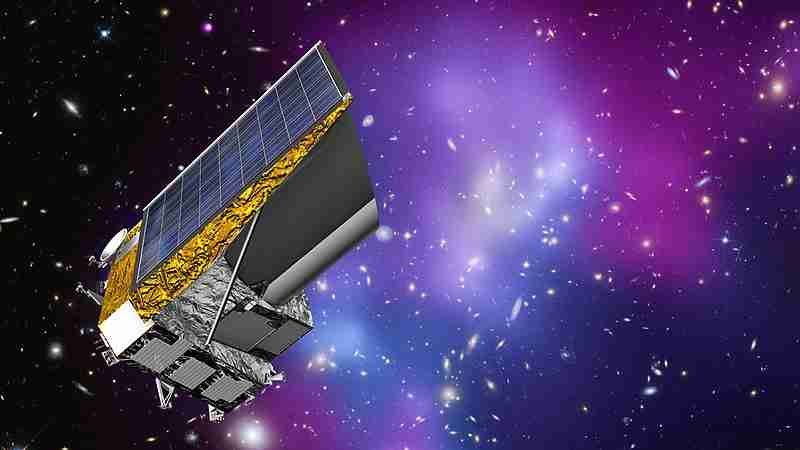The European Space Agency (ESA) launched the Euclid, a space telescope to study dark matter and dark energy.
Dark matter and energy
It’s believed that most of matter in the Universe is made of dark matter. Which does not absorb, reflect or emit any type of radiation, therefore, can’t be directly observed with any electromagnetic radiation. But, it interacts with normal matter through gravity.

It’s believed that dark matter is the responsible for keep constant orbital velocity independent on distance from galaxy’s center. Many scientist also believe that the current Universe expansion is caused by dark energy, because gravity should attract the galaxies. But it’s not known what this energy is made of, if it exists.
Euclid launch
Euclid was launched today, at 11:11 a.m., on local time, in a Space X Falcon 9 rocket, on Cape Canaveral, Florida. Will stay at Lagrange point L2, where is James Webb.
More information about Lagrange pointsClick here
Source: Space.com
Euclid aims to spend six years scrutinizing the dark universe to better understand galactic evolution, the early history of the cosmos and why the expansion of the universe is accelerating.
It will take Euclid roughly eight months to get up to speed once it reaches space. The mission must spend about 30 days journeying to a distant spot known as the Earth-Sun Lagrange Point 2, roughly 1 million miles (1.5 million km) from our planet on the opposite side of the sun.
Euclid will then spend the next seven months going through a commissioning period, including testing out its imaging capabilities and instruments. Early images of notable targets will be released sometime in the coming months, both to drive public engagement and to test the probe’s capabilities against ground observatories, officials have said.

Euclid is a survey mission, meaning that it will periodically move its telescope (and two instruments) in different directions to capture large swaths of the sky. It will thus serve as a complementary mission to space telescopes that look at small spots of the universe in high detail, such as NASA’s James Webb Space Telescope.
How Euclid works?
Source: ESA
Consists of a 1.2-metre mirror telescope that is designed to work at both visible and near-infrared wavelengths – the latter being just longer than the red light humans can see. The telescope will collect light from distant cosmic objects and feed it into two instruments.
The Visible instrument (VIS) and the Near Infrared Spectrometer and Photometer (NISP) will run in parallel, recording data simultaneously from whatever portion of the sky the telescope is pointed at.

The VIS instrument will handle the precise measurement of galaxy shapes by taking the very best images of distant galaxies that it possibly can. To do this, the instrument uses a mosaic of 36 CCDs, each of which contains 4000 pixels by 4000 pixels. This gives the detector a total of 576 megapixels.
The other instrument, NISP, is dedicated to making spectroscopic measurements of galaxies, which involves splitting their light into individual wavelengths. This allows the redshifts to be deduced. This property allows cosmologists to estimate the distance to the galaxy in question, and will allow Euclid’s data to be turned into the largest, most accurate 3D survey of the Universe ever conducted.
A special component behind the telescope, called the dichroic, separates the collected light and diverts the visible wavelengths to VIS and the infrared wavelengths to NISP.
The sensors on instruments were designed to operate at -180ºC, with ultralow noise and high sensitivity. According to ESA, the payload module structure is made of silicon carbide. Because metals expand and contract much more with temperature variation, which could degrade the capacity to focus light.



